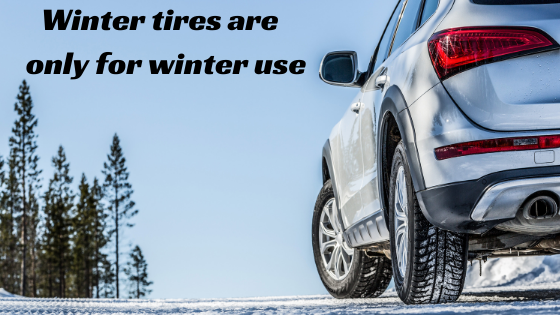If you are replacing tires of the dimension, 225/65R17, you have the option to use
225/65R17 winter tires and combine it with 225/65R17 all-season tires for the summer or then use a set of 225/65R17 all-weather tires that are approved for winter use. When driving during wintertime you definitely need winter tires if you have winter conditions with snow and ice. It is not safe to drive otherwise and regardless if it sounds like you would be ok with all-season tires, that is not the case. All-season tires are not approved for winter use and should only be used when the temperature is above freezing, and the roads are clear from snow, slush and ice.
Winter tires have better performance versus all-season tires already when the temperature drops below freezing. This is because the rubber compound in all-season tires have been optimized for warm temperatures. At low temperature they will lose their softness and they will eventually turn hard. Tires achieve some of its grip through the fact that they are able to comply with the surface, pushing some of its rubber into the micro-cavities in the surface. When you don’t have this, you will lose some of the grip and traction that you need for safe driving. This is why it is important to already change as the temperature drops and not wait for the snow to arrive. When the snow arrives, it is already too late for you to change tires, unless you can do it without driving anywhere.
When it comes to winter tires, you have a few options depending on where you live. The common winter tires are only for winter use, so you will need to have summer tires as well and alternate between them depending on the season. Some states and provinces also allow all-weather tires that have been approved for winter use, which can provide all year-round driving safety. This allows you to use only one set and not have to worry about when to change tires and the beauty is that you are always ready to drive regardless of weather conditions.
If you select dedicated winter tires, then you have the non-studded tires that are legal in all states and provinces. They don’t have metal studs and instead use unique tread pattern and grip particles to achieve grip on both ice and snow. Some states and provinces will allow the use of studded tires, which use the metal studs. They come with some limitations depending in the areas where they are allowed. Some might only be allowed for a certain time period or then not at all. If you plan to drive across state borders with studded tires, you will need to check that you don’t enter states where they aren’t allowed. They being superior on ice, they are often used in areas where icy roads are more prevalent, or where you just want to make sure that you have the best possible grip when you drive.
For more information regarding winter tires, visit: nokiantires.com
